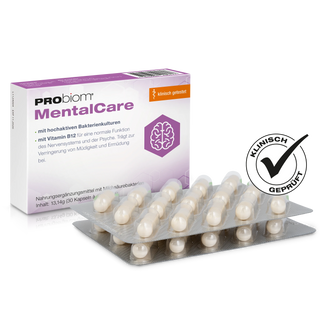A vaginal yeast infection—medically known as vaginal mycosis —is one of the most common intimate complaints among women. Almost every woman experiences this unpleasant experience at least once in her life: itching, burning, whitish discharge, and a feeling of discomfort in the intimate area.
But where does a vaginal yeast infection actually come from? The simple answer: It occurs when the natural balance of the vaginal flora is disrupted. But what disrupts this balance?
In this article, you will learn about the most important causes, risk factors, and how you can protect yourself from recurring infections.
What is a vaginal yeast infection and how does it develop?
The most common cause of vaginal yeast infections is the yeast Candida albicans . This microorganism lives naturally in the intestines or on the mucous membranes of many women – without causing any symptoms. Only when the immune system is weakened or the vaginal flora changes can Candida multiply uncontrollably and cause symptoms.
The vaginal flora consists of a variety of "good" lactic acid bacteria, the so-called lactobacilli . They ensure that the pH remains acidic, thus keeping pathogenic germs and fungi at bay.
Once this balance is disturbed, the vaginal mucosa becomes more vulnerable – and Candida gets the chance to spread.
Where do you get vaginal yeast infections? The most common triggers in everyday life
Vaginal yeast infections are not primarily transmitted sexually , although sexual intercourse can be a possible trigger. The actual cause usually lies in the internal environment – and this is influenced by many factors.
Hormonal fluctuations , such as those that occur during pregnancy, menstruation, or while taking the contraceptive pill, are among the most common causes. Hormones influence the pH and composition of the vaginal flora—and thus also the risk of yeast infection.
Antibiotics are also considered a classic trigger. They kill not only pathogenic bacteria but also the beneficial lactobacilli in the vagina. As a result, the natural defenses are lost, and yeast fungi can multiply unhindered.
Another factor is excessive intimate hygiene . Many women use harsh cleansing lotions or intimate sprays that dry out the mucous membranes and disrupt the bacterial balance. Soap-free washing with plain water or a mild intimate wash gel is usually sufficient.
Other common risk factors:
-
A weakened immune system (e.g. due to stress, chronic diseases)
-
High sugar consumption (Candida loves sugar)
-
Tight, airtight clothing
-
Chlorine water in the swimming pool
-
Tampons or panty liners with fragrances
Is vaginal yeast infection contagious?
A vaginal yeast infection is generally not highly contagious . While it can be transmitted through sexual intercourse, men often don't even notice an infection. To prevent recurrence, it may be advisable to have your partner treat recurring yeast infections – for example, with an antifungal cream.
It's important to note that vaginal yeast infections have nothing to do with poor hygiene . On the contrary, excessive cleansing or intimate sprays can actually promote the infection.
How do you protect yourself from vaginal yeast infections – sustainably and naturally?
The best preventative measure is a healthy vaginal flora . Strengthening the natural lactobacilli also protects against yeast infections. A balanced diet, sufficient sleep, moderate exercise, and gentle intimate hygiene are among the best protective measures.
After taking antibiotics or in the case of recurring infections, it may be helpful to use probiotic vaginal suppositories or preparations containing lactobacilli to restore bacterial balance.
The gut also plays a central role: If the gut microbiome is disrupted, this often also affects the vaginal flora. Targeted intestinal probiotics can have a positive effect here.
Conclusion: Vaginal yeast infection has many causes – but also many ways to prevent it
Vaginal yeast infections don't simply arise "from the outside"—they usually occur when the internal balance is imbalanced. Whether antibiotics, hormonal fluctuations, stress, or a weak immune system: the causes of vaginal mycoses are varied, but can usually be easily treated.
Those who actively protect their vaginal and intestinal flora and pay attention to gentle intimate hygiene can not only treat infections but also specifically prevent them.


















